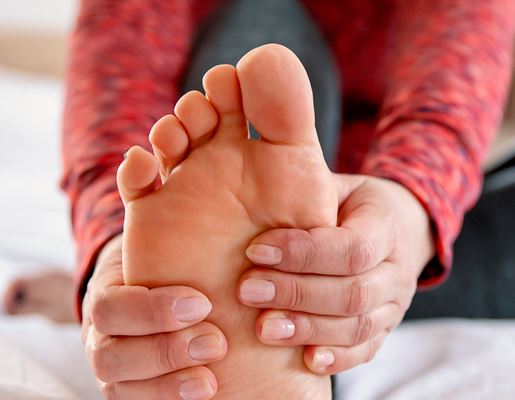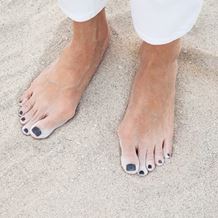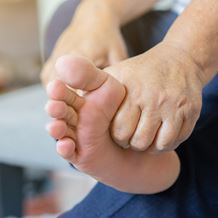Morton’s Neuroma
- Home
- Services
- Orthopaedics
- Foot Orthopaedics
- Common Foot Conditions
- Morton’s Neuroma
What is Morton’s neuroma?
Morton’s neuroma is a painful condition that affects the area between the ball of your foot and your toes. It occurs when the nerve gets trapped between the ends of the metatarsal foot bones usually in the space between the 3rd and 4th toes. This pressured environment triggers swelling and irritation, and as a result abnormal tissue forms prompting painful symptoms.
Morton’s neuroma is eight times more common in women and is linked to wearing uncomfortable or high-heeled shoes, abnormal foot shape, strenuous exercise and post-trauma injury. Symptoms typically include:
- Feeling like you are walking on a small pebble.
- Ongoing pain around the ball of the foot.
- Numbness.
- Burning or tickling sensation.
How is it treated?
In some cases, switching to more comfortable footwear can resolve the issue along with orthotics, foot cushioning and pain relief medication. If these measures are not effective and the pain is significantly affecting your quality of life and limiting activities, your doctor may suggest a neurectomy. This surgical procedure will either remove the affected nerve tissue and create space in the foot to relieve pressure, or completely remove a portion of the nerve itself. Without treatment, Morton’s neuroma is likely to get worse and can seriously limit your movement.
How long does it last?
Morton’s neuroma is an ongoing condition that may be managed through conservative treatment, but it won’t resolve itself and is likely to worsen over time. If your doctor has recommended surgery, the success rate is high and the recovery is fairly quick with a return to low impact physical activity after just a few weeks. It can take up to 6 weeks to make a full recovery, with some swelling persisting up to one year after treatment. It is possible that Morton’s neuroma can return after surgery, often as a result of scar tissue forming.

Other foot surgeries and procedures
- Bunion surgery
- Plantar Fasciitis surgery
- Hammer Toe surgery
- Flat Foot Surgery
- Foot Fusion surgery
- Neurectomy Foot surgery
Common foot conditions
Find a hospital with orthopaedic services
Our Hospitals
Related services

Bunion Surgery
A common medical procedure to treat bunions that cause ongoing painful symptoms.
Read More
Other Foot Surgeries and Procedures
Procedures for foot conditions such as plantar fasciitis and hammer toe surgery.
Read More
Find a Specialist
Talk to our world-leading orthopaedic specialists about the most suitable treatment options.
Read More